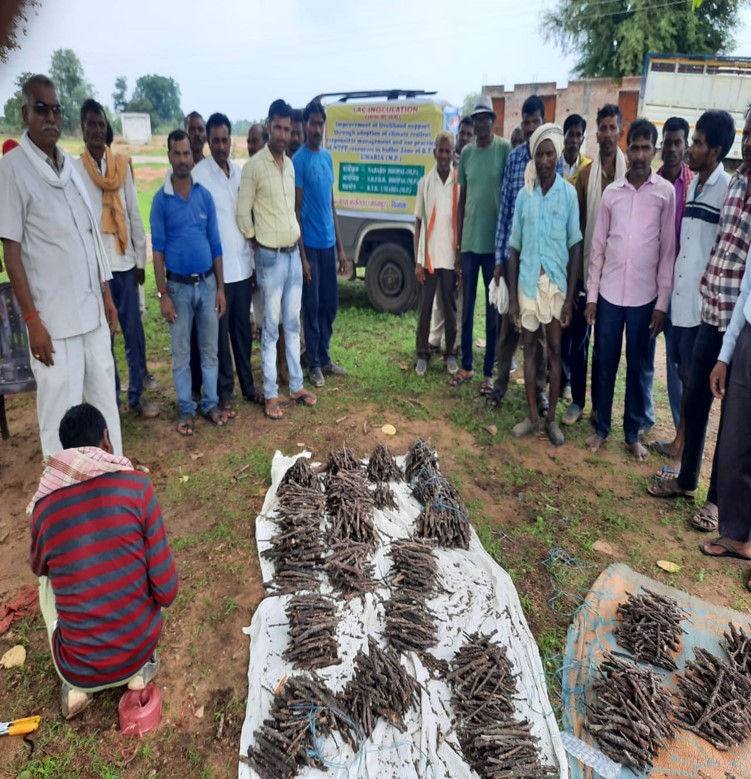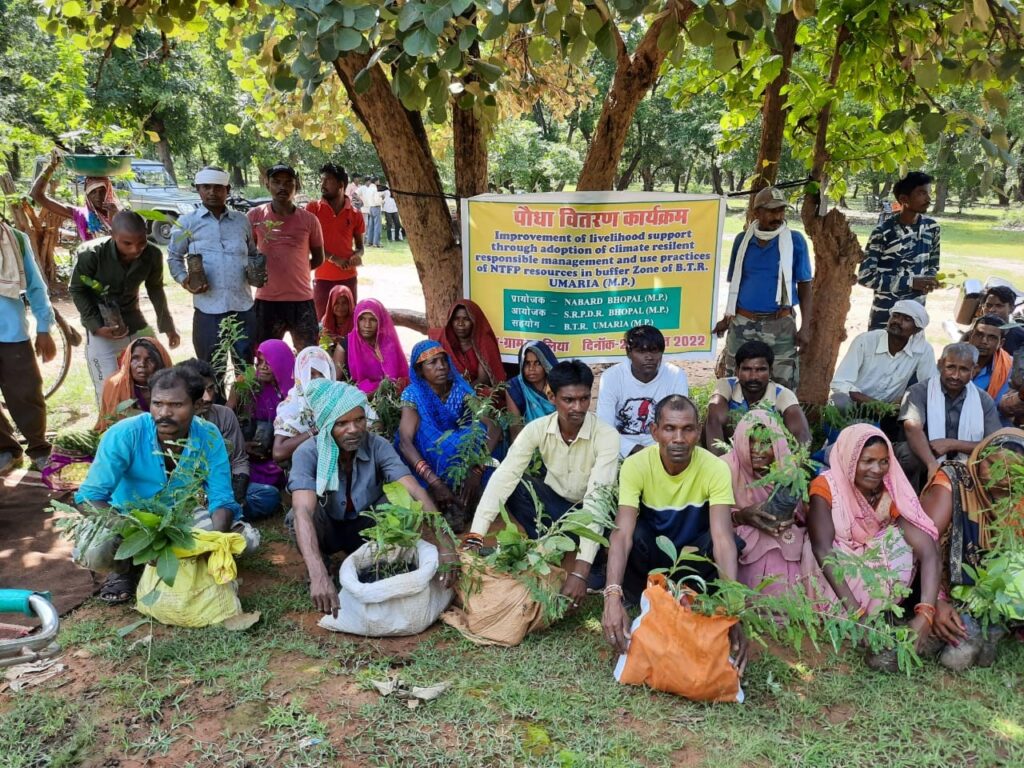The Success Story on FSPF (Farm Sector Promotion Funds)
NTFP offers incentive to the community to participate in the FLR activities : Village – Goras, Block – Karhal, District- Sheopur (M.P.)
The Experience of Forest Landscape Restoration (FLR) in Madhya Pradesh, India
R. PRASAD, S. CHATTERJEE, D. SHARMA, V. DAYMA and S. MALAKAR
Published in International Forestry Review
The concept of Forest Landscape Restoration (FLR) is highly relevant to the Indian context as it is a cost-effective option to cover large degraded forests rapidly. It envisages adopting a holistic view of greening that goes beyond tree planting in order to attain the goal of carbon sequestration and biodiversity enhancement through ecosystem restoration while at the same time developing the socio economic security of tribal communities.
This paper details the implementation of an FLR initiative in three demonstration plots in Sheopur and Dindori, Madhya Pradesh which are the homes of the Sahariyas and Baigas tribes, with a focus on restoration and effective community engagement.
Preliminary observations have produced promising results in terms of social engagement and financial income generated from the harvest.
In addition soil and moisture conservation through the adoption of 400–500 saplings/ha indicate a rapid greening and significant carbon sequestration.
Keywords: degradation, Forest Landscape Restoration, livelihood, PVTGs, community engagement
Measurable impacts of climate change on biodiversity and livelihood in the tropical dry deciduous forest of Sheopur, Madhya Pradesh, India
R. PRASAD, R. TIMOTHY and S. MALAKAR
Published in International Forestry Review
HIGHLIGHTS
- Climate change has had a direct and measurable impact on the livelihoods of local communities in Sheopur.
- There has been an observable trend in declining plant species within the forest due to changing climate patterns.
- A significant alteration in precipitation patterns, including a decrease in overall rainfall and an increase in the frequency of extreme weather
conditions, such as droughts and unseasonal rainfall, are affecting the agricultural crops more frequently. - Over the past two decades, the productivity or availability of NTFP has decreased by more than 30%.
- The identified forest landscape restoration interventions have brought positive results reflected in all three sample plots of Sheopur.
SUMMARY
This study investigates the measurable impacts of climate change on biodiversity and livelihoods within the tropical dry deciduous forest of Sheopur, Madhya Pradesh, India. With climate change emerging as a significant global concern, its effects on delicate ecosystems like the tropical dry deciduous forest are of paramount importance. Through a combination of field surveys, data analysis, and community engagement, an evaluation was conducted on the changes in vegetation and the impact on local livelihoods resulting from shifting climatic patterns. The findings underscore the critical need for adaptive strategies to mitigate the adverse consequences of climate change on both biodiversity and the well-being of local communities in this region.
Keywords: non-timber forest product (NTFP), biodiversity, climate extremes, vulnerability, adaptation, mitigation
Tribal Development Project for implementation in Bajag block of Dindori district of Madhya Pradesh.
Objectives –
- Establishment of suitable and viable livelihood activities, which improve income and sustainable livelihood of farmers/entrepreneurs.
2. Improvement in traditional economic activities.
3. Vertical integration through creation of processing and marketing facilities, common infrastructure etc.
4. Measures to improve quality of life such as preventive healthcare and sanitation.
5. Women empowerment through promotion of thrift groups, drudgery reduction, income generation.
6. Sustainable livelihood activities for landless.
7. Socio-economic changes such as formation of Community Based Organizations (CBOs) like PTDC, VPC, SHGs etc. to involve community with greater participation and decision making to carry out the works.

Nursery Establishment
Community Mobilization


Barbed wire fencing


